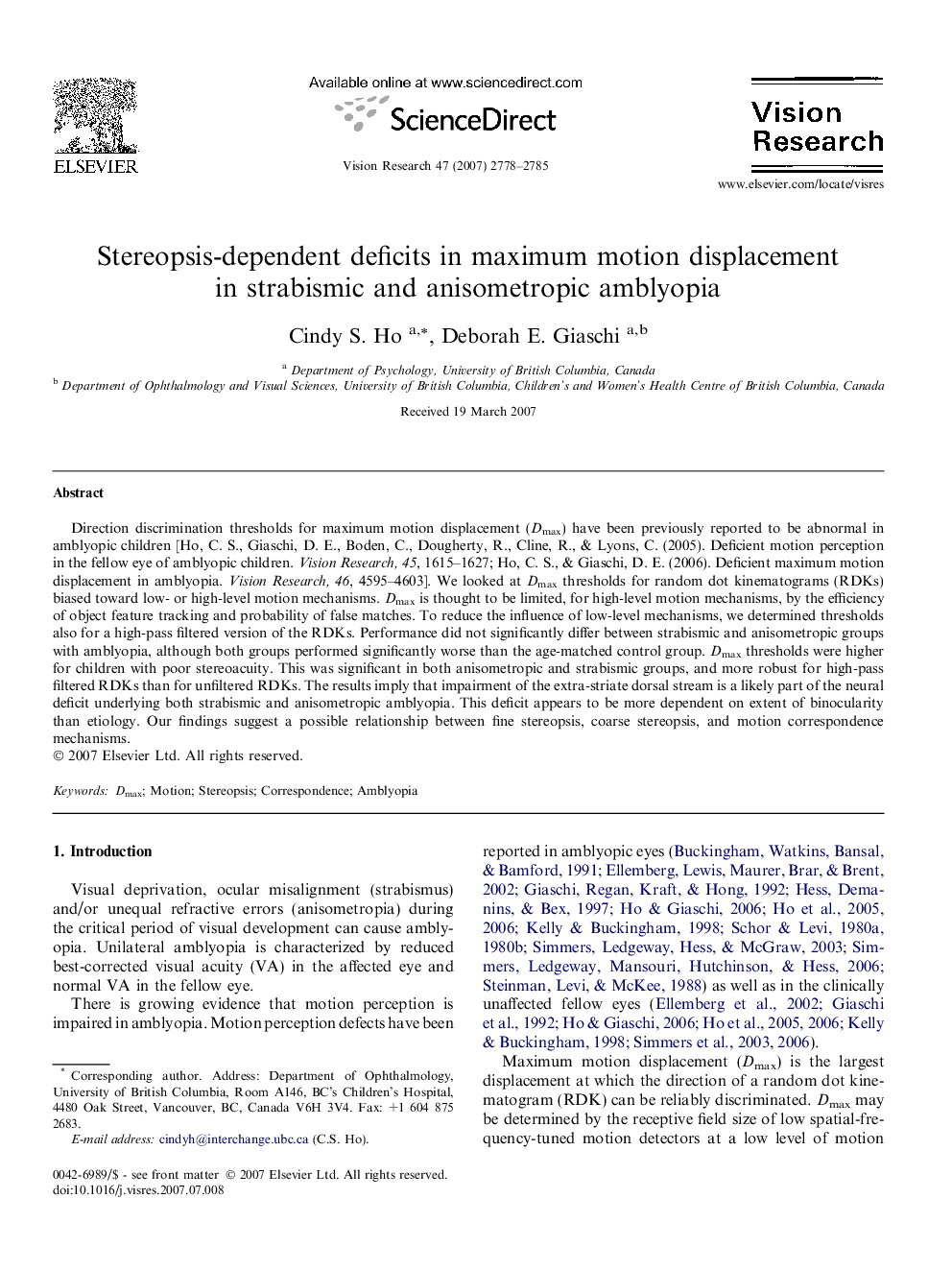| کد مقاله | کد نشریه | سال انتشار | مقاله انگلیسی | نسخه تمام متن |
|---|---|---|---|---|
| 4036136 | 1263576 | 2007 | 8 صفحه PDF | دانلود رایگان |

Direction discrimination thresholds for maximum motion displacement (Dmax) have been previously reported to be abnormal in amblyopic children [Ho, C. S., Giaschi, D. E., Boden, C., Dougherty, R., Cline, R., & Lyons, C. (2005). Deficient motion perception in the fellow eye of amblyopic children. Vision Research, 45, 1615–1627; Ho, C. S., & Giaschi, D. E. (2006). Deficient maximum motion displacement in amblyopia. Vision Research, 46, 4595–4603]. We looked at Dmax thresholds for random dot kinematograms (RDKs) biased toward low- or high-level motion mechanisms. Dmax is thought to be limited, for high-level motion mechanisms, by the efficiency of object feature tracking and probability of false matches. To reduce the influence of low-level mechanisms, we determined thresholds also for a high-pass filtered version of the RDKs. Performance did not significantly differ between strabismic and anisometropic groups with amblyopia, although both groups performed significantly worse than the age-matched control group. Dmax thresholds were higher for children with poor stereoacuity. This was significant in both anisometropic and strabismic groups, and more robust for high-pass filtered RDKs than for unfiltered RDKs. The results imply that impairment of the extra-striate dorsal stream is a likely part of the neural deficit underlying both strabismic and anisometropic amblyopia. This deficit appears to be more dependent on extent of binocularity than etiology. Our findings suggest a possible relationship between fine stereopsis, coarse stereopsis, and motion correspondence mechanisms.
Journal: Vision Research - Volume 47, Issue 21, September 2007, Pages 2778–2785